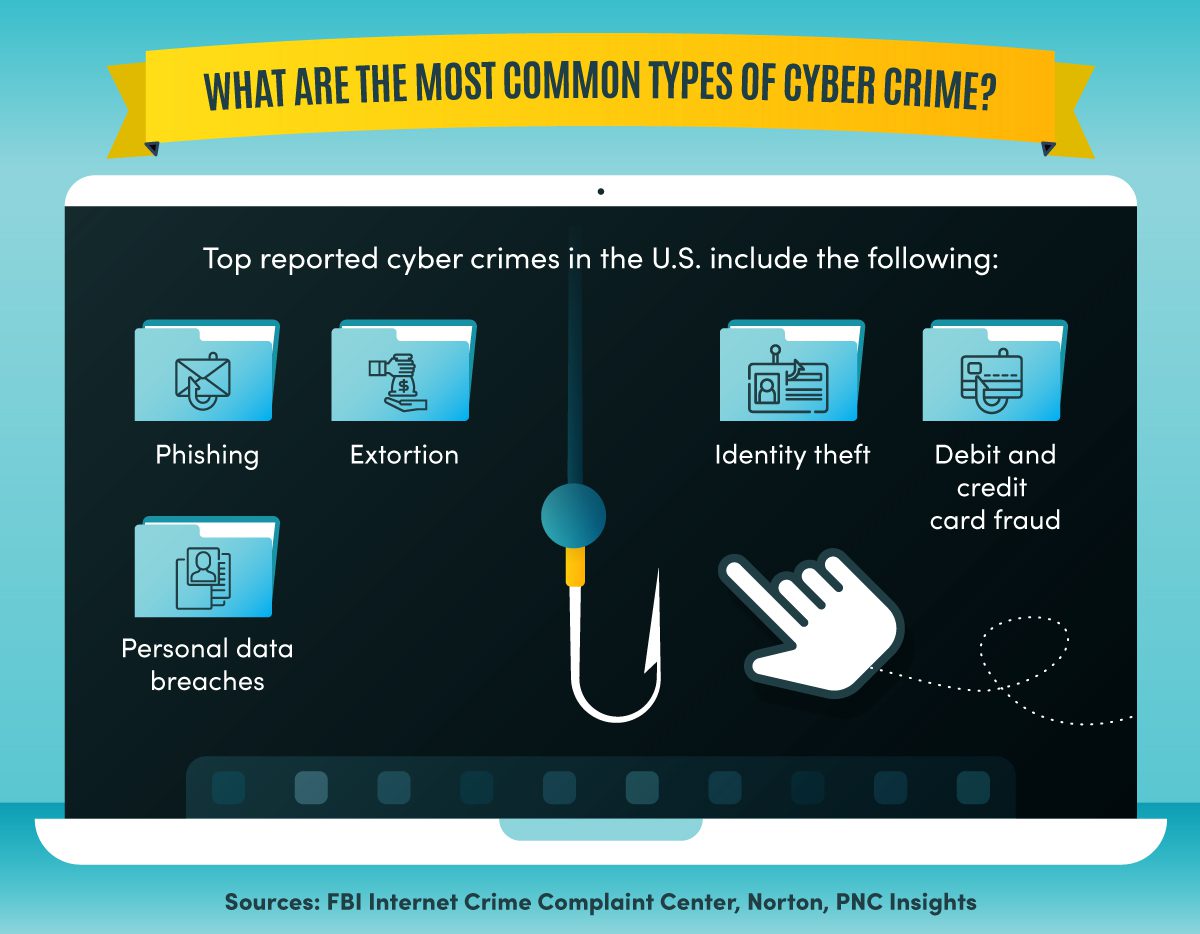The internet offers a range of conveniences, from shopping to communication with people around the world. However, it also poses potential dangers that can allow criminals to commit various internet crimes. This article highlights ten common types of internet crimes, including identity theft, phishing scams, cyberbullying, hacking, ransomware attacks, online scams, online harassment, child exploitation, cyber-stalking, and intellectual property theft. While enjoying the benefits of the online world, it is crucial to be aware of these crimes and use preventative measures to protect ourselves from harm. By educating ourselves and exercising caution, we can safely navigate the internet and avoid becoming victims of these internet predators.
10 Common Types of Internet Crimes That You Should be Aware of
The rise of the internet has provided us with various conveniences in our daily lives. With a few clicks, we can complete various tasks like shopping, banking, and communication with people around the world. However, while we enjoy these benefits, we must also be aware of the potential dangers that come with the online world. The internet can provide opportunities for criminals to commit various crimes. In this article, we will highlight 10 common types of internet crimes that you should be aware of.
1. Identity Theft
Identity theft is the act of stealing someone’s personal information, such as their name, address, and social security number. This information is then used to commit fraudulent activities like applying for credit cards, loans, and bank accounts. The stolen data can be obtained through phishing scams, hacking, and malware attacks.
2. Phishing Scams
Phishing scams are fraudulent emails or text messages that appear to be from legitimate businesses or organizations that try to entice you into providing sensitive information like usernames, passwords, and credit card information. Scammers use these tactics to trick you into clicking on links or attachments that lead to malicious websites, capturing your personal data without your knowledge.
3. Cyberbullying
Cyberbullying is when someone uses the internet or social media to harass, intimidate or threaten someone else online. It can take various forms like sharing embarrassing photos or videos, spreading rumors, and sending threatening messages. Cyberbullying can have severe consequences, including depression, suicide, and social isolation.
4. Hacking
Hacking is the act of gaining unauthorized access to someone’s computer system or network. Hackers use various techniques like password cracking, social engineering, and malware to gain access to sensitive information. Once hackers gain access, they can steal data or install malware or ransomware to extort money from their victims.
5. Ransomware Attacks
A ransomware attack is when a hacker installs malware on your computer, encrypting your data to prevent you from accessing your files. The hacker then demands a ransom payment in exchange for a decryption key to unlock your data. These attacks can cause severe financial losses and can be challenging to recover from.
6. Online Scams
Online scams come in many forms, including lottery scams, romance scams, and work from home scams. The common theme among these scams is that you are offered some reward or income, but you need to pay a fee or provide personal information upfront. Once you pay or provide the information, the scammers disappear, leaving you penniless and frustrated.
7. Online Harassment
Online harassment can take various forms like stalking, sending threatening messages, and sharing someone’s personal information without their consent. It can affect anyone, but women, minorities, and the LGBTQ+ community are disproportionately targeted. Online harassment can cause extreme emotional distress and can sometimes escalate into physical violence.
8. Child Exploitation
Child exploitation includes various activities like producing, distributing, and possessing child pornography. Pedophiles use the internet to search for and contact vulnerable children and build relationships with them to gain access to their personal information. Child exploitation is a severe crime, and the penalties for the offenders are harsh.
9. Cyber-Stalking
Cyber-stalking is the use of the internet or social media to harass, intimidate, or threaten someone. It is similar to traditional stalking, but it is done online. Cyber-stalkers use various tactics like posting negative comments, creating fake social media profiles, and sending threatening messages to their victims.
10. Intellectual Property Theft
Intellectual property theft is the unauthorized use, distribution, or sale of someone’s intellectual property, like copyrighted material, patented inventions, and trademarks. This type of theft can cause significant financial losses to the creators and can stifle innovation and creativity.
Conclusion
The internet has opened new doors for communication, education, and entertainment. However, it has also provided opportunities for criminals to commit various crimes. It is essential to be aware of these crimes and take preventative measures to protect ourselves from online dangers. By educating ourselves and using common sense, we can enjoy the online world without falling prey to the online predators.
